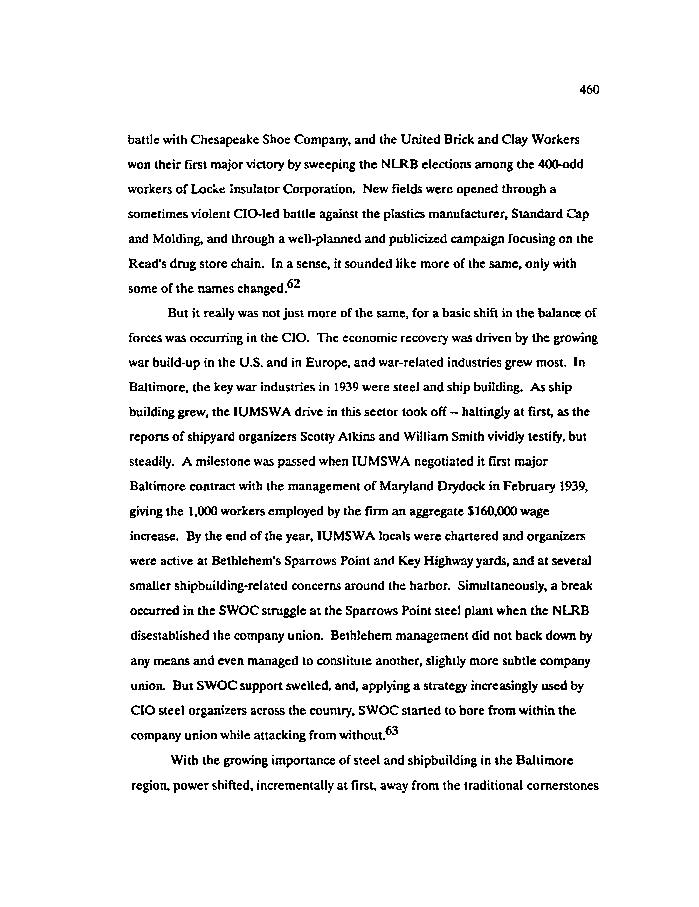|
460
battle with Chesapeake Shoe Company, and the United Brick and Clay Workers
won their first major victory by sweeping the NLRB elections among the 400-odd
workers of Locke Insulator Corporation. New fields were opened through a
sometimes violent ClO-led battle against the plastics manufacturer, Standard Cap
and Molding, and through a well-planned and publicized campaign focusing on the
Read's drug store chain. In a sense, it sounded like more of the same, only with
some of the names changed."^
But it really was not just more of the same, for a basic shift in the balance of
forces was occurring in the CIO. The economic recovery was driven by the growing
war build-up in the U.S. and in Europe, and war-related industries grew most. In
Baltimore, the key war industries in 1939 were steel and ship building. As ship
building grew, the IUMSWA drive in this sector took off — haltingly at first, as the
reports of shipyard organizers Scotty Atkins and William Smith vividly testify, but
steadily. A milestone was passed when IUMSWA negotiated it first major
Baltimore contract with the management of Maryland Drydock in February 1939,
giving the 1,000 workers employed by the firm an aggregate $160,000 wage
increase. By the end of the year, IUMSWA locals were chartered and organizers
were active at Bethlehem's Sparrows Point and Key Highway yards, and at several
smaller shipbuilding-related concerns around the harbor. Simultaneously, a break
occurred in the SWOC struggle at the Sparrows Point steel plant when the NLRB
disestablished the company union. Bethlehem management did not back down by
any means and even managed to constitute another, slightly more subtle company
union. But SWOC support swelled, and, applying a strategy increasingly used by
CIO steel organizers across the country, SWOC started to bore from within the
company union while attacking from without.
With the growing importance of steel and shipbuilding in the Baltimore
region, power shifted, incrementally at first, away from the traditional cornerstones
|

